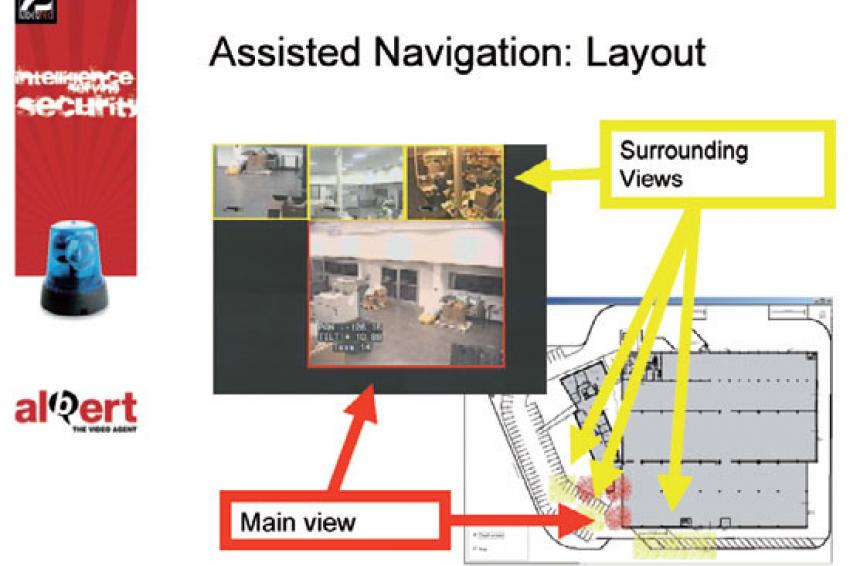Videotec: video analytics tool for perimeter detection
28.08.2012 - Videotec: video analytics tool for perimeter detection. It was not only pure enthusiasm for motorbike racing that led Videotec’s management team to decide to combine the introducti...
Videotec: video analytics tool for perimeter detection. It was not only pure enthusiasm for motorbike racing that led Videotec’s management team to decide to combine the introduction of the new Albert system for video analytics with a visit of the Moto GP and World Championship races at the Dutch TT in Assen. During the visit of the paddock some of Videotec’s distributors could not only see but feel how important it is to work as a team to succeed in a race – and in business. In racing the results are not only depending on the driver’s ability and the bike, but also on the work of the mechanics and the team behind the team. The company’s new video analytics tool Albert is also the result of a team work as it was developed over the last four years by a specialist team at Videotec and experts at the University of Padova.
Advanced Video Analytics
As a result of the development and intense talks to customers, the video agent Albert is an innovative single channel video encoder with advanced VCA algorithms and unique features like intelligent cooperation and assisted navigation.
What Videotec had in mind, was to develop not only another video analytics tool, but to create a tool that is suitable for any analogue camera and that enables the user to implement its cameras in a network that is – together with the company’s high speed positioning systems – able to work out an efficient and coordinated perimeter protection.
The New Approach: Networked Intelligence
In centralised systems where the intelligence is in the central server, the PC has the overview of what is happening on the whole system. But with this approach one needs to have a powerful PC and the video needs to be decompressed before being analysed. Another disadvantage is high bandwidth requirements and such a system is not very fault tolerant. An alternative to centralised systems is to put the intelligence into the edge devices, so that the CPU is fully dedicated to one camera only. Then there are lower bandwidth requirements and the analysis is made on uncompressed video.
The disadvantage is that now each device does not know what the others are doing, an overview of such a system is not possible. Videotec’s approach of networked intelligence combines advantages and eliminates disadvantages of centralised or edge type approaches. Like the members of a team, Albert communicates with other Albert devices to perform cooperative actions even without a central server:
- each video agent broadcasts information about its current activities,
- each video agent knows what the others are doing and can help,
- there is no need of a central server to coordinate cooperation,
- the Operator is supported in its video surveillance activities.
With this new system it is possible to do an assisted navigation, smart area patrolling and to concentrate the surveillance activities at the alarmed location with minimum bandwidth requirements in a fault tolerant systems. With the assisted navigation the current camera is displayed in the centre of the screen (main view) and alternative views are displayed around the main view. Such views show logical best alternatives to the one watched by the main camera.
Self-learning Event Detection
The Albert video agent features an advanced, self-learning event detector developed for dynamic and outdoor scenarios. The system needs only a minimum of configuration parameters and after installation will adapt the parameters for alarm to the situation and location that is monitored. As a result influences like moving trees, rain, sea waves, light changes and shadows do not cause false alarms.
In phase one of the motion analysis, during 20–30 seconds the algorithm learns the dynamic scene and the algorithm identifies static zones and zones exhibiting not important motion like moving trees. The thresholds are set automatically by the algorithm so that the operator needs not to be asked to set any threshold or mask. In phase two the algorithm now detects only events of relevant motion accordingly to the learned scene.
Learned motion is not detected and relevant motion is further analysed using a combination of user defined rules:
- barrier crossing,
- not allowed directions,
- forbidden areas,
- maximum/minimum size,
- object removal/left.
After the Race Is before the Race
Like during the Moto GP racing season, in the security business one can not just sit down very long and reflect on past victories, since the next race is already ahead. According to the Videotec team, the launch of Albert is only the first step into the market for video analytics.
The digital imaging development team is working on a family of new products in this field and a support team for distributors and installers for these products is formed and already waiting for the start signal.
Contact:
Videotec S.p.A.,
Schio (VI), Italy
Tel.: +39 0445 697 411
Fax: +39 0445 697 414
martina@videotec.com
www.videotec.com











